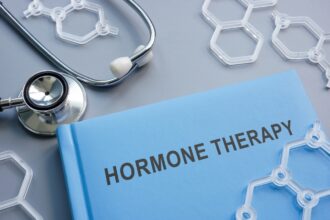Physical therapy stands as a cornerstone in the management of pain, whether acute or chronic. Through a comprehensive, mechanism-based approach, it aims to alleviate discomfort and enhance quality of life. This overview delves into the multifaceted strategies employed in physical therapy to address pain, highlighting the importance of a tailored treatment plan. Among notable experts in the field, Dr. Jordan Sudberg underscores the significance of understanding the complex nature of pain, facilitating a more effective and patient-centric approach to therapy.
Understanding Pain Mechanisms
At the heart of effective pain management in physical therapy is the understanding of pain mechanisms. These mechanisms are broadly categorized into five areas: nociceptive, central, neuropathic, psychosocial, and movement system. Recognizing the signs and symptoms associated with each mechanism is crucial for developing a targeted treatment strategy. This comprehensive evaluation encompasses changes in peripheral tissues, neuropathic pain indicators, alterations in central processing, psychosocial factors, and movement system dysfunctions.
Nociceptive Pain
Nociceptive pain arises from actual or threatened damage to non-neural tissue, signaling through nociceptors. Physical therapy targets this pain type through modalities that reduce tissue inflammation, enhance healing, and mitigate pain signals. Techniques include manual therapy, therapeutic exercises, and modalities like heat and cold therapy.
Neuropathic Pain
Neuropathic pain resulting from nerve damage or dysfunction, presents a unique challenge. Physical therapists employ strategies such as nerve glides or mobilizations and electrical stimulation to address this pain type. These interventions aim to improve nerve function and reduce pain perception.
Targeted Physical Therapy Interventions
The application of targeted interventions is a hallmark of physical therapy’s approach to pain management. By focusing on the underlying mechanisms, therapists can tailor treatments to the individual’s specific needs, enhancing the effectiveness of the therapy.
Exercise and Movement
Exercise and movement therapies are pivotal in addressing pain, particularly those related to the movement system and nociceptive pain. Customized exercise programs not only improve physical function but also contribute to pain reduction by enhancing central inhibition and reducing excitability.
Manual Therapy and TENS
Manual therapy techniques, including massage and joint mobilization, target both nociceptive and neuropathic pain by promoting tissue healing and reducing pain sensitivity. Transcutaneous Electrical Nerve Stimulation (TENS), on the other hand, offers a non-invasive option to modulate pain perception, particularly beneficial for neuropathic pain conditions.
The Role of Psychosocial Factors
Understanding the psychosocial aspects of pain is integral to a holistic approach to pain management. Physical therapy incorporates strategies to address these factors, recognizing their significant impact on pain perception and patient recovery.
Education and Support
Educating patients about pain mechanisms and management strategies plays a crucial role in therapy. This knowledge empowers patients, reducing fear and anxiety associated with pain, and promoting active participation in their treatment plan.
Cognitive Behavioral Strategies
Cognitive-behavioral strategies are employed to address the psychological aspects of pain, such as depression and anxiety, which can exacerbate the physical sensation of pain. Techniques such as stress management and coping skills training are integral components of a comprehensive pain management plan.
Advancements in Pain Management Technologies
The field of physical therapy is continually evolving, with technological advancements offering new avenues for pain management. These technologies enhance traditional therapeutic methods, providing additional tools for therapists and patients alike in the battle against pain.
Wearable Technology
Wearable devices have emerged as a significant innovation in monitoring and managing pain. These devices allow for real-time tracking of physiological parameters, enabling therapists to tailor interventions more precisely and patients to gain insights into their condition and progress.
Virtual Reality Therapy
Virtual reality (VR) therapy represents a cutting-edge approach to pain management, particularly for chronic pain conditions. By immersing patients in virtual environments, VR can distract the brain from pain signals, provide therapeutic exercises in engaging settings, and improve mental well-being through relaxation and meditation techniques.
Conclusion
The reduction of pain through physical therapy is a dynamic and multifaceted process, requiring a deep understanding of the underlying mechanisms of pain and a personalized approach to treatment. As highlighted by professionals, the future of pain management lies in leveraging this knowledge to provide targeted, effective, and compassionate care. By integrating various physical therapy interventions with an understanding of psychosocial factors and embracing technological advancements, therapists can offer a holistic approach to pain management, significantly improving patient outcomes and quality of life.










